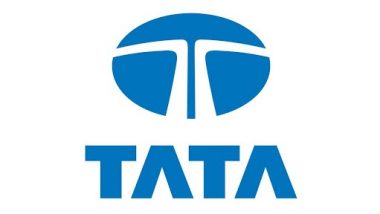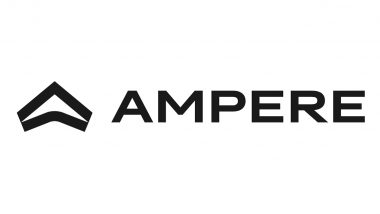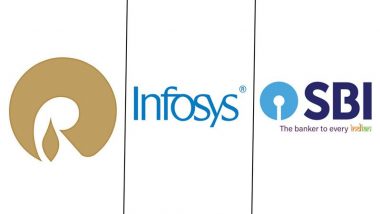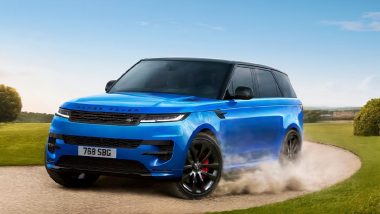New Delhi, August 11: Electric vehicle sales in the country are expected to hit the 10 lakh annual sales mark by the end of the decade, Tata Motors, which anticipates green vehicles to account for 50 per cent of its total sales by that period, said on Friday. The Mumbai-based auto major, which crossed 1 lakh cumulative EV sales milestone, currently gets 14-15 per cent of its overall sales from electric models on a quarterly basis.
"Five years back, electric vehicles used to sell just 90 units a month. Today these sell 8,500 to 9,500 units a month, which is like 100 times more...five years back the industry had sold about 2,000 cars and we are talking about already an annualised run rate this year of more than one lakh units so it's a 50 times growth," Tata Motors Passenger Vehicles Managing Director Shailesh Chandra told reporters here. Chandra, who also heads the company's passenger electric mobility vertical, noted that with enhanced charging infrastructure and with other automakers also entering the EV space, the vertical is set for sustained growth. Tata Punch iCNG Launched in India; Checkout Price, Variants, Features and Powertrain Details.
"In the next five years why it should not be at least 10 times close to 1 million is what I would say... its going to be an exciting time for the Indian consumers and for the country with the possible realisation of a vision that was laid down by the government," he noted. When asked about the sales targets for Tata Motors in the EV segment, Chandra said: "We have really said that in the next four to five years we will target 25 per cent penetration and by the end of this decade we would have 50 per cent penetration is what we are aiming for." Tata Motors currently sells a range of electric models including Tiago EV, Nexon EV and Tigor. Delhi Shocker: 11-Year-Old Boy Killed by Woman in Inder Puri, Body Found Inside Bed Box.EV
The company has already declared its three-phase EV strategy with plans to offer different body styles at several accessible price points, meeting the evolving needs of EV consumers. The automaker has already showcased future concepts at the Auto Expo 2023 – the Curvv, Harrier EV, Sierra EV and the Avinya. The company expects these EVs to open up new segments of customers in India. Chandra said with new players coming into the EV segment, the company will focus on volume growth and not worry too much about the market share. "At the start of this calendar year, on average we were selling about 3,500 units a month and now we are gravitating towards 6,500 units a month," he added.
Tata Motors' market share at the end of the April-June quarter stood at around 71 per cent in terms of vehicle registrations. Responding to a query, he noted that electric vehicles for personal usage should be covered under the FAME scheme to achieve the stated goals in terms CO2 emission reduction and others aspects. "We have always represented ourselves to the government that this is one segment which should be supported because if you see from all the angles one that 90 per cent of the demand (for EVs) lies there," he said.
To promote electric and hybrid vehicles, a Rs 10,000 crore programme under the FAME-II scheme was announced in 2019. It is the expanded version of the present scheme FAME (Faster Adoption and Manufacturing of (Hybrid) and Electric Vehicles) India I, which was launched on April 1, 2015, with a total outlay of Rs 895 crore. In three-wheeler and four-wheeler segments, incentives apply mainly to vehicles used for public transport or registered commercial purposes. In the two-wheeler segment, the focus is on private vehicles.
Chandra noted that demand in the fleet segment is just 7-8 per cent of the industry demand. "So if you really want to bring that change of electrification then it can only come through the personal segment...even if you see from a co2 emission perspective.. And so would be the case for fossil fuel imports.. so I think from all the directions it makes sense that it is aligned to the objectives for which electrification has been started," he added. Citing examples of Maharashtra and Gujarat, Chandra said when the state governments extended the incentive also to the customer segment the sales increased drastically.
"Before the incentive was announced, we were selling 100 cars per month in Maharashtra. During the period of incentive, we peaked at 900 units per month. After the incentive was removed, it has stabilised around 750 units a month. So once you create that interest it sustains and therefore the government has to just spark start there in the country for a certain number of quantities And I think that can really help," he stated. Chandra noted that going forward the Tata Group is also looking at local production of battery manufacturing. On EV major Tesla entering India and what could be its impact on the company, Chandra said: "Any competition is not be seen as a threat but it is a reality in which you have to compete and therefore the focus will be that we are agile to what the competition is doing and how can we deliver a differentiated product to the customer."
On one lakh sales mark, Chandra said milestone is a springboard for electrification to grow. It represents the fast-progressing ecosystem, giving confidence to customers, suppliers, charging infra players and investors to deploy new technologies and build capabilities in the industry, he added. Such fast-paced growth will create significant employment across categories of the workforce in new technologies while improving air quality, reducing oil imports and making India a key hub for EV and EV component manufacturing, Chandra said.
(This is an unedited and auto-generated story from Syndicated News feed, LatestLY Staff may not have modified or edited the content body)





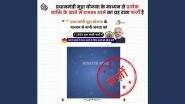







 Quickly
Quickly









